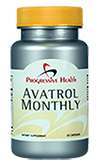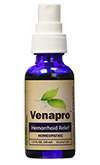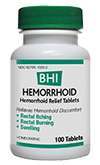
Want to Make Your Own Apple Cider Vinegar At Home?
Apple cider vinegar (ACV) has many health benefits. It is made through the process of fermentation and is high in magnesium, potassium, phosphorus, and calcium. Apple Cider Vinegar (ACV) helps to prevent heartburn, aids with digestion, promotes healthy detoxification of the liver and other organs, eliminates candida overgrowth, eases digestive ailments, accelerates weight loss, helps prevent osteoporosis, slows the aging process, maintains a healthy alkaline pH Level, helps to regulate blood sugar, can help lower blood pressure, improves heart health, and assists in the fight against free radical damage.
ACV May Be Used Topically
It is wonderful for the skin, it may be added to bathwater, to naturally restore the skin’s PH balance. It eliminates bacteria and fungus on the skin which can lead to a host of problems, including eczema, dandruff, and many other skin conditions. Because of its great dandruff preventing abilities, may be used after shampooing as a conditioner.
Making Your Own ACV Ensures That Your Vinegar Retains The Beneficial “mother.”
The vinegar which still has the culture of beneficial bacteria that turns regular apple cider into vinegar is the ‘mother’. This culture of beneficial bacteria is responsible for most of the health benefits associated with ACV.
Important Notes
This recipe contains sugar – the sugar is necessary as it “feeds” the bacteria.
Preparation
Make sure that the jar and equipment are perfectly clean (not to introduce any bacteria other than what is naturally taking place in the process).
Supplies
- Organic apple scraps
- Any size clean jar
- Organic cane sugar
- Filtered water
- Cheesecloth or coffee filter
- Rubberband
- Fermentation weight or small glass jar
Ingredients
- Gala, Fuji, McIntosh, or Granny Smith Organic apple scraps – enough to fill your jar ¾ of the way full.
- 2 TBSP cane sugar
- 2 cups filtered water
Instructions
- Fill the jar ¾ full with apple scraps.
- Dissolve 1 tablespoon of cane sugar into one cup of water.
- Pour sugar water over the apple scraps until they are completely submerged – make sure the apple scraps are covered with the sugar water.
- Push the apples down with a fermentation weight or with the small glass jar. Apples which are exposed to the air could mold.
- Cover with a cheesecloth or coffee filter and secure with the rubber band.
- Store in a dark place at room temperature.
- Check to make sure the apples are staying under the water and to make sure no mold is growing every few days.
- The apple pieces may be strained out and return the liquid to the jar.
- Leave the liquid mixture for an additional three weeks – stirring the liquid mixture every few days.
- After six weeks the ACV should have reached the taste required and you can put a lid on it or transfer it to a different jar with a lid and start using it!
Final Notes
When the ACV is ready to be consumed you can save “the mother” which has floated to the top or just a small quantity of the finished ACV to start a new batch that will ferment much quicker.
TOP 5
APPLE CIDER VINEGARTreatments |
|||||
| ACV Pure | That Hippie Co. Apple Cider Vinegar | Nature's Way Apple Cider Vinegar Diet | Nutrition Forest Apple Cider Vinegar | Salus Defense Apple Cider Vinegar | |
|---|---|---|---|---|---|
| 1 | 2 | 3 | 4 | 5 | |
| Price (1 bottle) Price (6 bottles)best value |
$49.95 $139.80 |
$27.18 $163.09 |
$29.99 $179.94 |
$48.95 $293.70 |
$49.95 $299.70 |
| Overall Rating | 99.50% | 94% | 91.30% | 89% | 76.30% |
| Performance |





|





|





|





|





|
| Speed of Results | Extremely Fast | Fast | Good | Average | Slow |
| Quality of Ingredients | Premium | Good | Good | Average | Average |
| Customer Satisfaction Evaluation | 99.40% | 92.1% | 90.2% | 87.3% | 73.4% |
| Safety Evaluation | Safe for Use | Safe for Use | Safe for Use | Safe for Use | Safe for Use |
| Customer Service Rating |





|





|





|





|





|
| Reorder Rate | Highest | High | Good | Average | Average |
| Return Policy | Risk Free | Only on damaged or faulty items | Unopened | Risk Free | No |
| Success Rate | 99% | 93.25% | 91% | 89.2% | 75.4% |

 Subscribe Now
Subscribe Now










